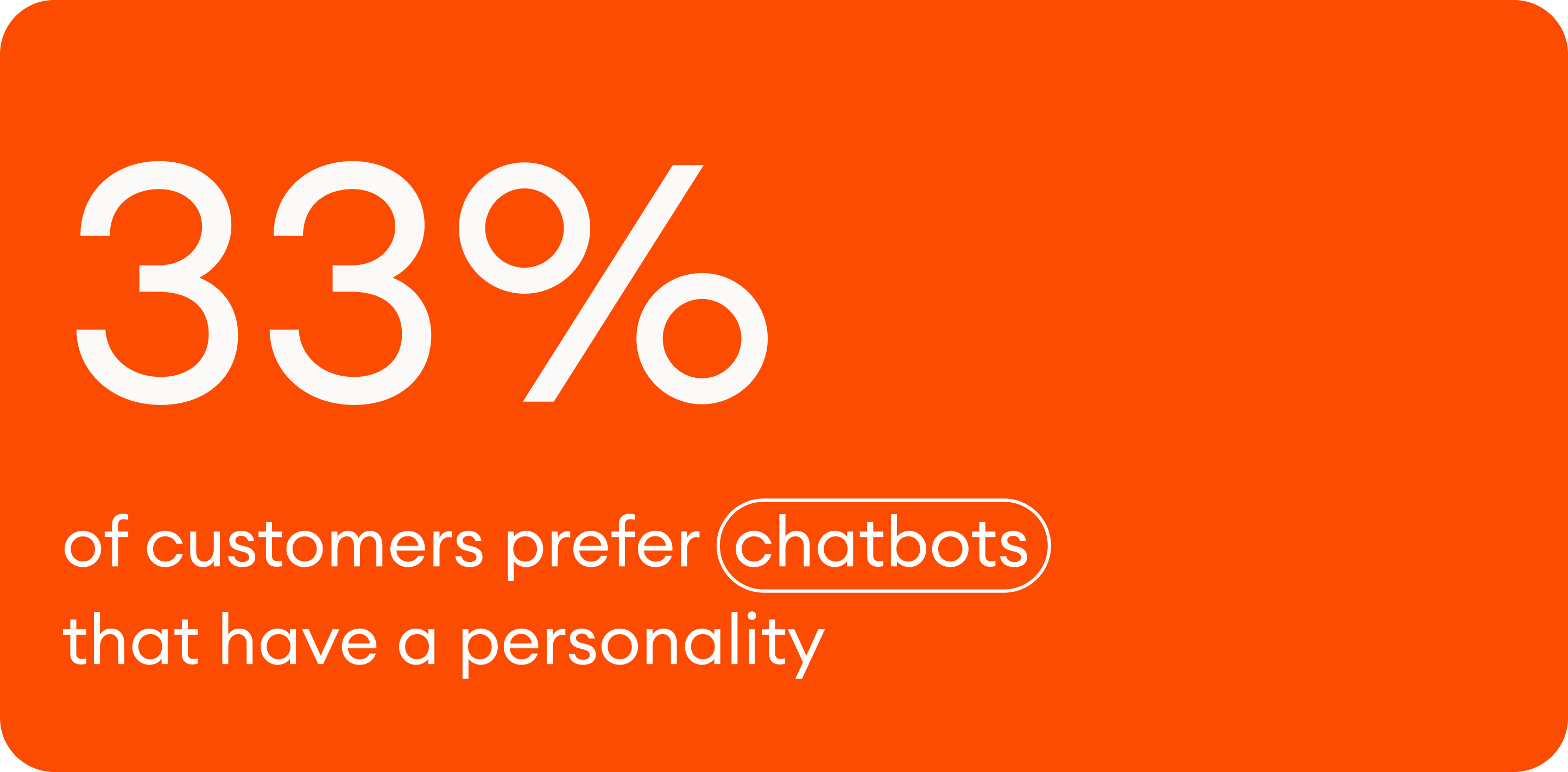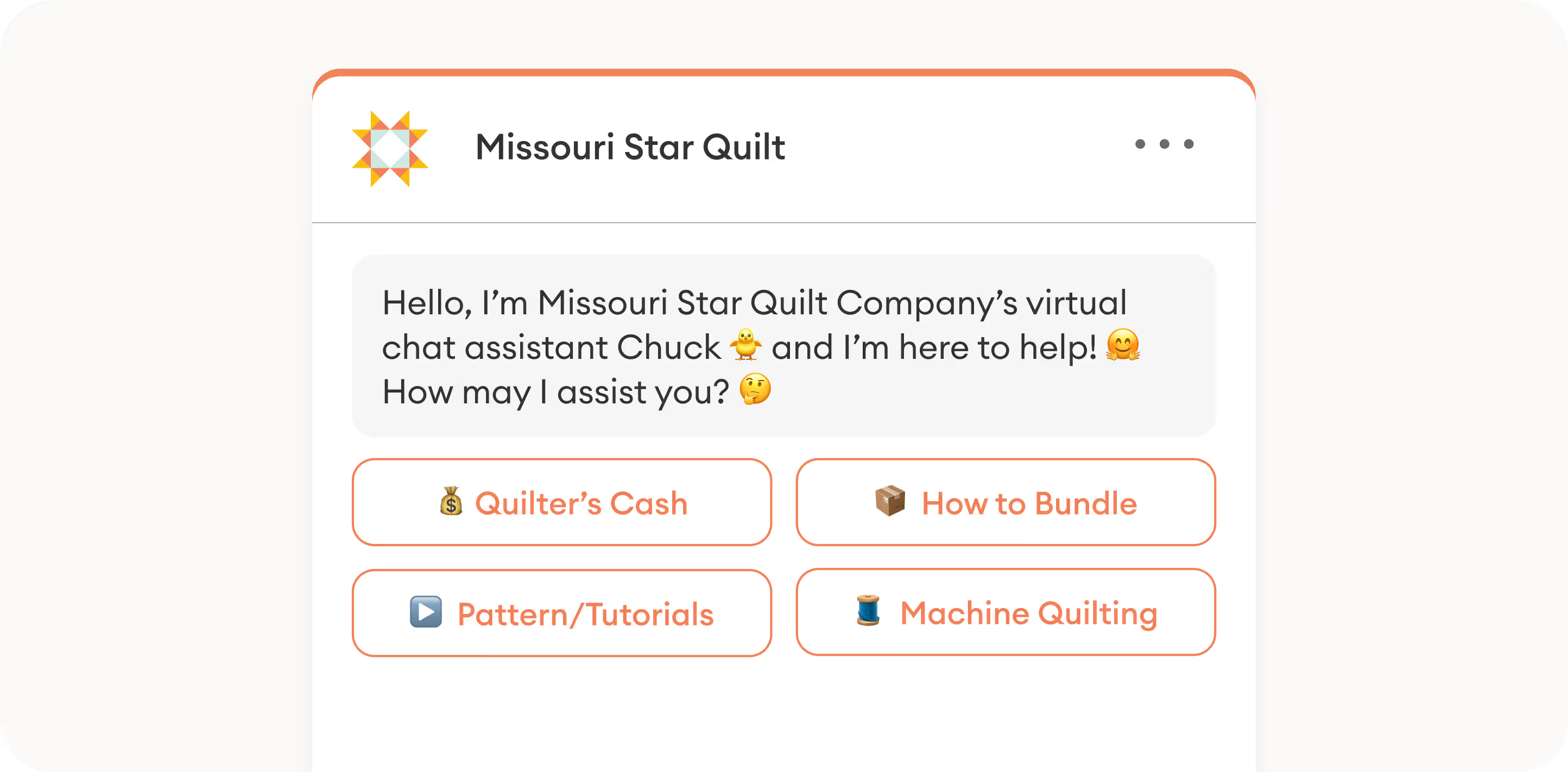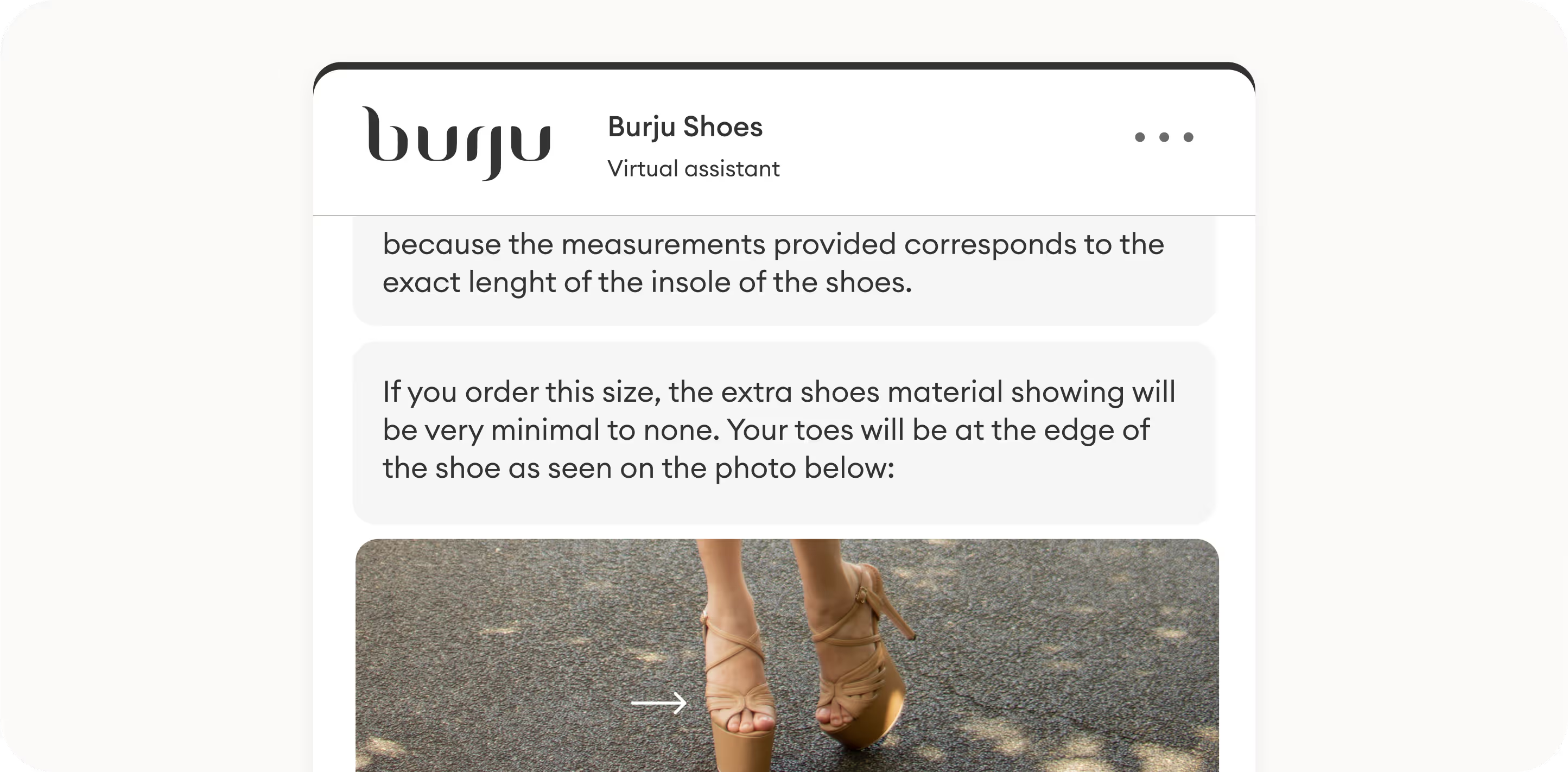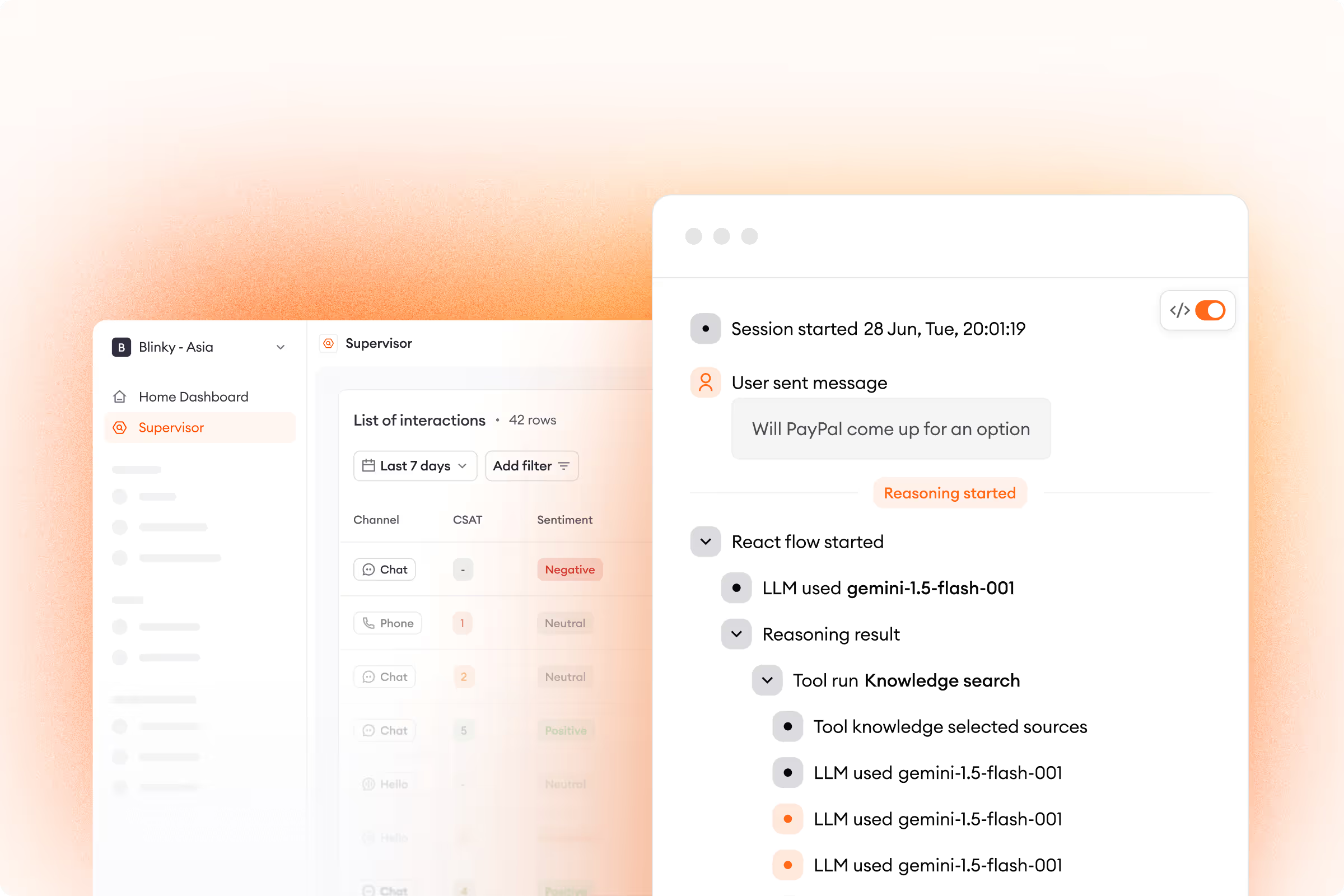Beep boop.
How can I be of assistance?
Sorry, I do not understand your request.
Tired of chatbots sounding so…robotic? Ugh.
There’s good news — stale, lifeless chatbots are no longer the norm. These tools can generate engaging, human-like responses that are even, dare we say, fun.
80% of customers who use AI chatbots have a positive experience, and it’s not only because they’re getting instant answers. Nearly 40% say they enjoy chatbots because they deliver friendly messages in a company’s unique voice.
That’s right — the key to boosting your customer experience just might be a solid chatbot persona.
What is a chatbot persona, and how can you build one? Read our guide to have your bot bursting with personality in no time.
What is a chatbot persona?
A chatbot persona is your virtual assistant’s personality. It dictates how your chatbot greets guests, asks for feedback, and guides users throughout the entire shopping journey.
Think of it as the heart of your chatbot. A persona breathes life into a chatbot, elevating its responses above simple factual answers. Displaying your brand’s distinct voice, a chatbot can interact with customers as a smart friend that’s informative and fun at the same time.
Why is a chatbot persona important?
Creating a chatbot persona doesn’t just sound nice — its benefits are backed up by hard numbers.
A single negative chatbot experience can drive away 30% of your customers. Yes, speed and accuracy are important, but so is reaching out to shoppers with human-like responses. 33% of customers specifically prefer customer service chatbots that show off some personality.

And since most customers want to be treated like individuals, building a chatbot’s personality is one of the simplest and most effective ways businesses can increase customer loyalty and satisfaction.
Download our free ebook, Finding the Right Customer Service Automation Software, to see how easy choosing the perfect chatbot can be.
How to build a chatbot persona
Now you’re ready to start crafting the perfect chatbot persona — excellent. Follow these simple steps to give your chatbot some added pizzazz that’ll actually resonate with customers.
1. Identify your audience
Nobody knows your customers better than you. Think of who is buying your products, and figure out how they want to be spoken to. Speak their language and address their most common concerns in a way that sounds natural.
To achieve this, track demographic data like age, sex, and location so you can come up with tailored messages that work for your target audience.
For instance, are you talking to older customers who may be more wary to interact with artificial intelligence (AI), or are your shoppers from younger generations that prefer chat-first support?
Leading automation solutions can zero in on your customers — and their biggest pain points — by analyzing their most frequently asked questions. Once you know what challenges shoppers are facing, it’s easier to build conversation flows for automated responses in the exact tone customers expect.
The best platforms are also able to collect customer feedback to see which automations should be improved, allowing you to continuously refine responses until users get helpful answers that speak to their particular needs.
2. Extend your brand voice
Many businesses have a specific tone of voice that guides all user interactions, whether they happen on your webpage, over email, or on social media.
Use your brand voice as the building blocks for your bot persona. Do you encourage customer support reps to speak formally or casually with customers? Are slang and jokes permitted?
Iron out your answers to these questions, and build a chatbot that sounds just like another one of your human agents. That way, customers will enjoy natural language and a consistent experience whether they chat with a bot or an agent.
And it truly is possible to give your chatbot a human touch — 27% of customers can’t tell if their last customer support interaction was with a support rep or bot.

3. Give your bot a name
To really let your chatbot persona shine, the devil is in the details.
Being as specific as giving your chatbot a name can make a world of difference from the customer’s perspective. And when you think about it, that makes perfect sense — we’re already calling our favorite voice assistants, like Siri and Alex, by their first name.
From the get-go, hit customers with something catchy and creative that reflects your brand’s overall personality. Remember, your chatbot should act like another agent that helps out the rest of your team, so flesh out its persona with a suitable name.
Popular examples from the world of ecommerce include Casper’s Insomnobot 3000, Gwyn from 1-800-Flowers, and Missouri Star Quilt Co.’s Chuck.

To help pick out the best bot name, let your creative juices flow and conjure up a backstory. Decide if you want your bot to be male or female. Many brands have a masculine or feminine feel to them, and fully humanizing your chatbot can produce a positive psychological impact on your customers.
See how Missouri Star Quilt Co. achieved unrivaled efficiency while maintaining their brand voice with AI chat in our customer success story.
5. Add visual content
Yes, your bot will mostly share text with your customers, but don’t let that limit you. Visual elements are capable of enhancing its persona. They’re more eye-catching than words alone and can really elevate the customer experience.
To fully illustrate your chatbot’s personality, you don’t need to be an artist. For starters, apply your brand colors to the chat widget, so your chatbot’s design looks like an organic part of your website. Give your bot an avatar, and sprinkle emojis throughout your responses to make the content more engaging.
While you might start small, the sky’s the limit here. Images, GIFs, videos — not only will each of these grab users’ attention, but they’ll also improve functionality and make shopping more satisfying.
For a successful use case, look no further than Burju Shoes. As a D2C producer of dance and street footwear, they know finding a shoe that’s the right size is essential. So, their chatbot removes the guesswork, providing images of their products on real models, letting shoppers see exactly how items will fit.

5. Test and perfect
Testing your chatbot persona is vital to ensure that it delivers an excellent user experience. Double down on what’s working and fix what isn’t.
How can you tell if your persona is making customers swoon? One metric to consider is sales.
On average, chatbots are able to increase sales by 67%. If you’re not seeing the desired effect, don’t get discouraged. You’re not locked into your persona and are free to fine-tune it as your business evolves.
Regular testing will bring you closer to your end goal — creating a repeatable, positive experience for your users.
Showcase your personality with Zowie
What’s the best human-like chatbot?
Well, it can be yours — with Zowie.
Zowie’s AI-powered customer service automation software lets businesses fully customize their chatbot to amplify their brand voice while assisting more customers — without needing a human agent to intervene.
It’s a no-code solution that’s up and running in hours, seamlessly integrating with any existing tech stack.

.avif)







